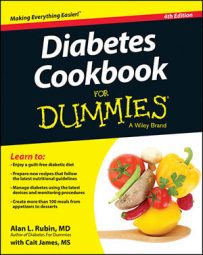Food contains a lot more than just carbohydrate, protein, and fat. Most of the other components are micronutrients (present in tiny or micro quantities), which are essential for maintaining the health of human beings. Examples of micronutrients include vitamins (such as vitamin C and vitamin K) and minerals (such as calcium, magnesium, and iron).
Most micronutrients are needed in such small amounts that it’s extremely unlikely that you would ever suffer a deficiency of them. A person who eats a balanced diet by using the pyramid technique or the exchange technique doesn’t have to worry about getting sufficient quantities of micronutrients — with a few exceptions, which follow:
Adults need to be sure to take in at least 1,000 milligrams of calcium each day. If you’re a young person still growing, pregnant, or elderly, you need 1,500 milligrams daily. The best food sources of calcium are plain nonfat yogurt, fat-free or low-fat milk, fortified ready-to-eat cereals, and calcium-fortified soy beverages.
Some menstruating women lose more iron than their bodies can spare and need to take iron supplements. The best sources of iron are iron-rich plant foods like spinach and low-fat meats.
You probably take in 20 to 40 times more salt (sodium) than you need and are better off leaving added salt out of your diet.
You should increase your uptake of potassium to help lower blood pressure. The best sources are leafy green vegetables, fruit from vines, and root vegetables.

